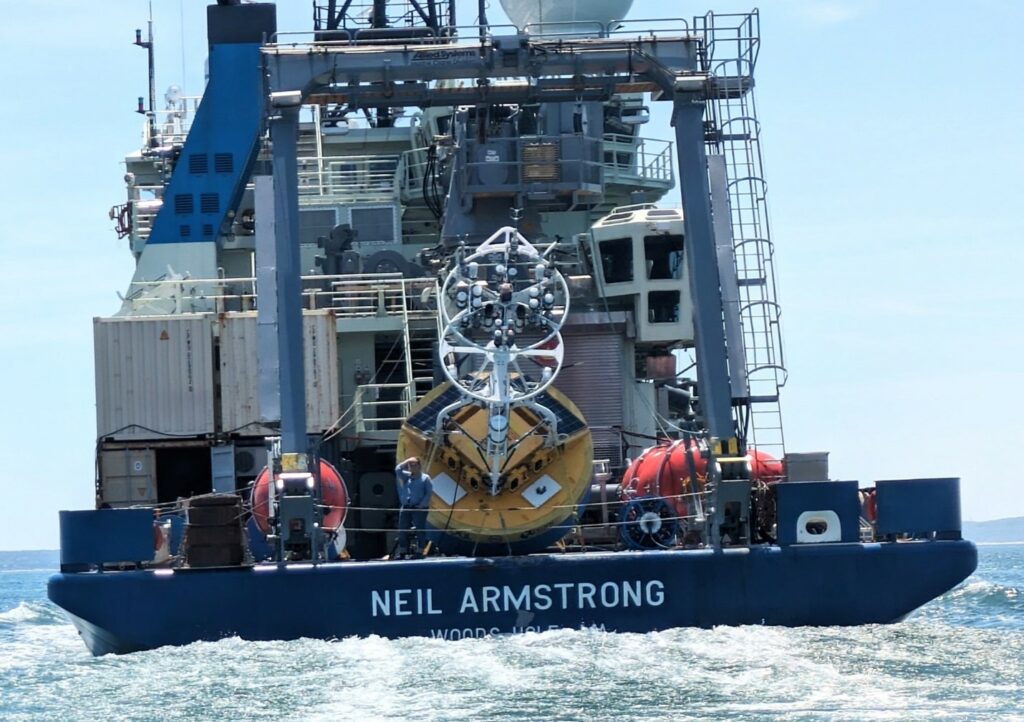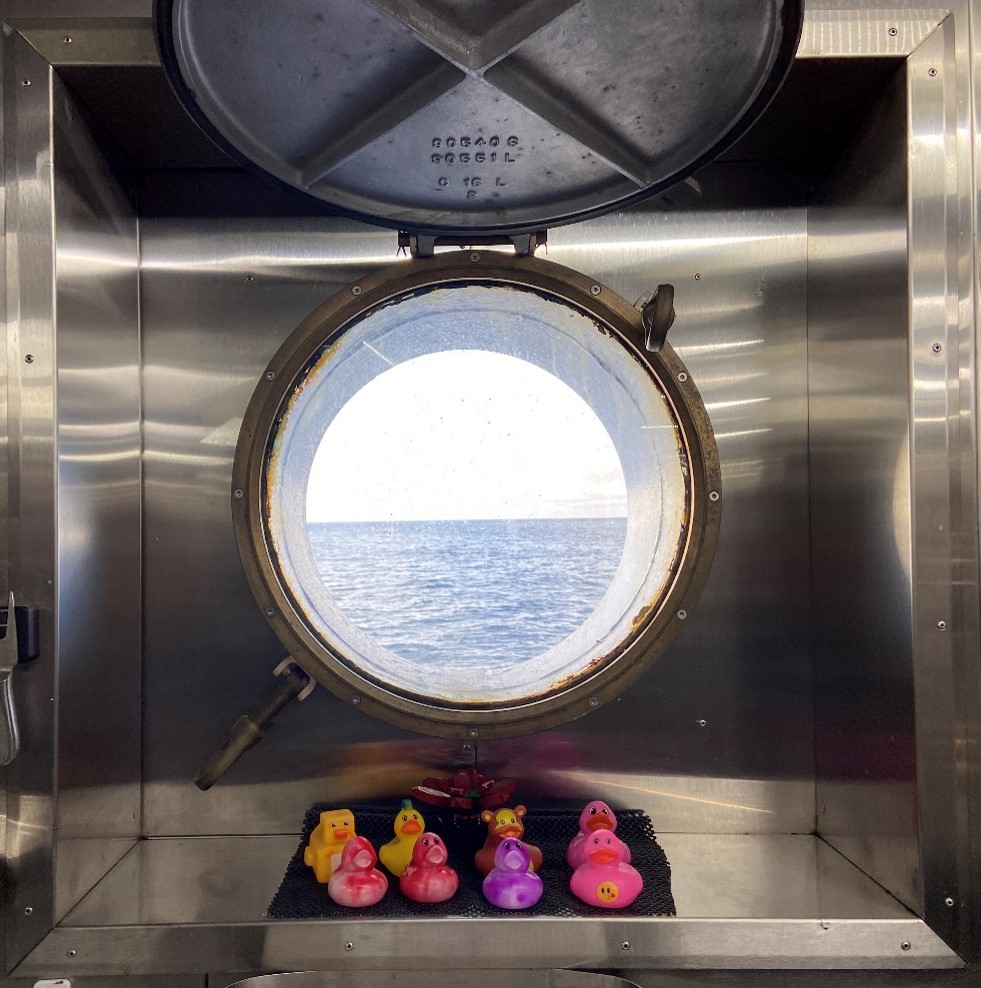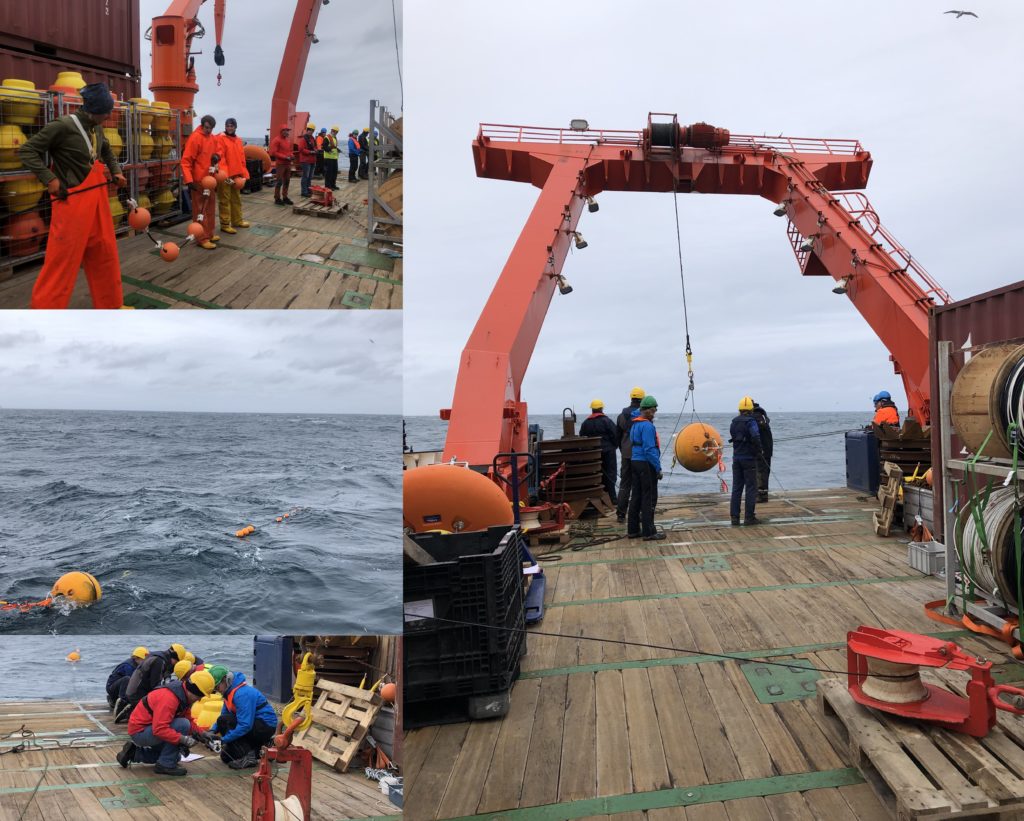By H Furey
The 2024 OSNAP field season is underway. The R/V Armstrong departed her homeport of Woods Hole on 02 June 2024, loaded with gear, and bound for the Irminger Sea. The ship will spend the summer in the subpolar North Atlantic, in support of OSNAP and other science programs. The next time the Armstrong will be in home will be in November.

Photo: I look out from the fantail as the R/V Neil Armstrong departs from Woods Hole. Goodbye land, goodbye Cape Cod summer, goodbye green, goodbye flowers and nesting birds. See you in a while. (Photo by Dave Fisichella, WHOI.)
I’m thankful to be with this crew, on this ship, and with this science party. It’s been a year since I’ve last been to sea, and then, in the Indian Ocean in support of a different project. Our OSNAP component is supported by Adam Houk (WHOI) and me, with help from Meg Yoder (Boston College). We travel with the NSF Ocean Observing Initiative (OOI) crew who are turning the Global Irminger Sea Array (https://oceanobservatories.org/array/global-irminger-sea-array/). The term ‘turning’ means to recover the moorings and instruments currently in the water and deploy new moorings with fresh instruments. For the OSNAP portion of the cruise, we are turning the moorings east of the Greenland shelfbreak (OSNAP ‘GDWBC’ moorings M1, M2, M3, M4). OOI supports OSNAP in that two of the OOI moorings are inline with the OSNAP array, and the OOI mooring data are used in the OSNAP transport, heat, and freshwater calculations. We lean on the other science personnel and students onboard, who help mightily to get the OSNAP moorings recovered and re-deployed, instruments calibrated, CTD casts collected, water sampled and analyzed. In turn, we help them as we can during their mooring and hydrography operations. We have a few more days of steaming north to deep water, and then the work begins.

Photo: This year Harry Burnett, our Chief Steward, has a collection of ducks in the galley window.
